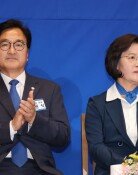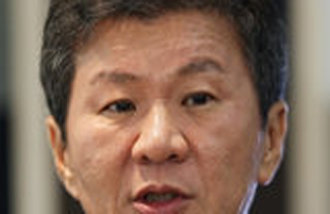Korea saving rate as low as 3% on 50th anniversary of Saving Day
Korea saving rate as low as 3% on 50th anniversary of Saving Day
Posted October. 28, 2013 03:51,
The Financial Services Commission and five financial associations including the Korea Federation of Banks launched a saving campaign in February this year in a bid to increase the household savings rate. The financial authorities, associations and commercial banks together went out to the streets and handed out campaign leaflets as they used to do in the early 1980s. Eight months from the onset of the campaign, the Dong-A Ilbo asked of the campaign to an official from a commercial bank. Disappointedly, he asked back, Have we run such a campaign? He even complained that deposits are not fully welcomed because there are few places to invest in and make profits from.
Although Monday marks the 50th anniversary of Savings Day, savings are treated as a source of worry even by banks, while Koreas savings rate (savings to disposable income), one of the world`s lowest-savings rates, doesnt seem to improve.
According to the Bank of Korea on Sunday, Koreas household savings rate, which was 24.7 percent in 1988, plummeted to one-digit number (8.6 percent) in 2000 and further declined to 3.4 percent last year. According to the OECD, Korea is ranked 24th in savings rates, lagging behind other OECD members, such as Sweden (12.9 percent), France (12.5 percent), Mexico (10.0 percent) and Chile (7.2 percent).
The four major commercial banks KB Bank, Woori Bank, Shinhan Bank and Hana Bank suffered losses of over four trillion won in fixed deposits in September (316.32 trillion) from January (320.91 trillion). Although commercial banks ambitiously launched an asset-building deposit product for wage earners, a deposit account subject to the exemption of interest income taxes (15.4 percent including residence tax), in 18 years, the number of subscribers in August stood only at 19,000, a dramatic decrease from 880,000 in March.
Some experts point out that the savings rate has declined because the Korean government ignored the importance of savings while encouraging consumption in order to stimulate domestic economy. The governments policy direction started to change as it reduced the number of deposits with tax deduction benefit, which were as many as 10 in 1999, into one and provided tax benefits for credit card users.
For several years, the Korean government has launched various instruments such as Smile Microcredit and Sunshine Loans and written off debts for lower-income people while reducing or eliminating income deduction benefits including those for personal annuity savings. Lim Il-seob, an analyst of Woori Finance Research Institute, said, While expenditures including communications and private education expenses have dramatically risen, disposable income has not increased much. This is part of the reason that people have less to save.
One researcher from a national research center said, From the 1960s to the 1980s, businesses securing funds were so important for economic development that savings were considered valuable. Nowadays, however, companies can easily raise funds without depending on peoples savings, adding, The governments approach of using the people and households as a means for economic growth has not changed.
The problem is that declining savings rates lead to worsening not just household economy but also national economy. If the household savings rate excessively goes down, Korea may face a financial crisis like the U.S. or chronic low growth and low prices like Japan. In a long term, low growth in the service industry and other industries based on domestic consumption will increase the nations vulnerability to external shocks, according to a recent analysis by the Bank of Korea.
Former finance minister Kang Bong-gyun said, Koreas savings rate was over 20 percent even when the nations per capita income was below 5,000 dollars, adding, Though the rate cannot be as high as it used to be, raising the savings rate is urgent to recover Koreas growth momentum.







